OHRID - MACEDONIA

OHRID - MACEDONIA

This page is intended to provide basic information for the participants.
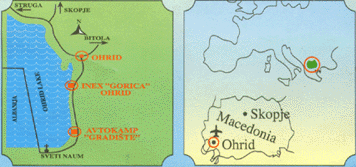
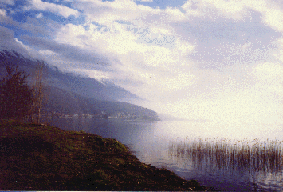 The Republic
of Macedonia is a country of lakes, which are not only an important natural
resource, but also have major potential for the development of tourism.
There are three large tectonic lakes, fifteen artificial lakes and also
twenty-five glacial lakes located in the highest areas of the mountain
ranges dating from the Ice Age.
The Republic
of Macedonia is a country of lakes, which are not only an important natural
resource, but also have major potential for the development of tourism.
There are three large tectonic lakes, fifteen artificial lakes and also
twenty-five glacial lakes located in the highest areas of the mountain
ranges dating from the Ice Age.
The largest tectonic lake, Lake Ohrid, lies at an altitude of 693 m. It comprises a total area of 349 square kilometres, 1 1 8.9 of which belong to Albania. The water of this lake is characterized by its special colour and reaches a summer temperature of 24'C. Its singular natural conditions have made possible the survival of life forms from the Tertiary Period, owing to which Lake Ohrid has often been called a museum of living fossils.

Ohrid Trout Salmo trutta letnica
Ohrid is a millenium Balkan transversal in a sense
of time as well as space. It lies on a magical hill which rises on the
northern shore of the shining Lake Ohrid. It has been a living town for
two thousand and four hundred years, known under the ancient name of Lihnid.
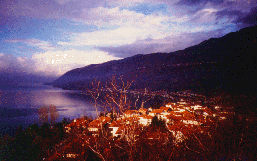 It was mentioned
for the first time in history when it was seized by Philip II, the King
of Macedonia. It presents an exceptionally important urban and cultural
center situated on the Roman trade road Via Egnatia, linking the Adriatic
Sea with the Aegean Sea a town with woven achievements into the tapestry
of a powerful ancient civilization.
It was mentioned
for the first time in history when it was seized by Philip II, the King
of Macedonia. It presents an exceptionally important urban and cultural
center situated on the Roman trade road Via Egnatia, linking the Adriatic
Sea with the Aegean Sea a town with woven achievements into the tapestry
of a powerful ancient civilization.
Later on it bears the name "The Balkan Jerusalem", the everlasting
town, the holy place protected by eternity and endlessness. Ohrid is the
early Christian church center, the seat of the first an-Slovanic university
in Europe, through the activity and the human mission of St. Clement of
Ohrid, the first Slav bishop and the patron of the town - the seat of the
reputed archbishopry of Ohrid. Ohrid is the most important official capital
of the first Slave Macedonian state, of Samuel's empire.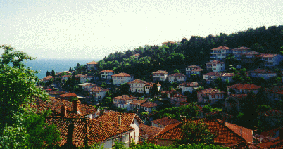
With its fundamental cultural and historical monuments, such as the Fortress of Emperor Samuel, the classical theatre, the early christian episcopal churches, the medieval sacred monuments and the Gallery of Icons. Ohrid is a true legend of Macedonian history and together with the oldest and one of the most beautiful lakes in Europe - the Ohrid Lake, it presents a poetic bravery of nature. Together they present a world cultural and natural heritage under the protection of UNESCO.
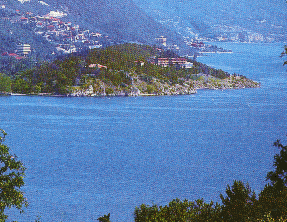 In the 9th
centure A.D., Ohrid was a grand centre of Slavic literacy and cultural
activity carried out under the guidance of the Slavic scholar, Kliment
(Clement); in the late 10th and early 11th centuries. It was the capital
of Tsar Samuel and his successors, and for several centuries it was the
seat of the autocephalous. Archbishopric of Ohrid, and one of the most
important artistic centres in the Balkans.
In the 9th
centure A.D., Ohrid was a grand centre of Slavic literacy and cultural
activity carried out under the guidance of the Slavic scholar, Kliment
(Clement); in the late 10th and early 11th centuries. It was the capital
of Tsar Samuel and his successors, and for several centuries it was the
seat of the autocephalous. Archbishopric of Ohrid, and one of the most
important artistic centres in the Balkans.
![]() SOME OF THE IMPORTANT MONUMENTS
AND CHURCHES IN OHRID
SOME OF THE IMPORTANT MONUMENTS
AND CHURCHES IN OHRID

![]() LINKS:
LINKS:
